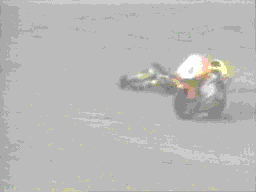
VIBRATION MODES OF MOTORCYCLES
The motorcycle is assumed to run straight on a flat, level
road surface at a certain velocity. The rider is thought to be a rigid body
fixed to the rear frame, who can exert no control on the motorcycle.
For simplicity's sake, the motorcycle is considered to have rigid suspension;
from a kinematic point of view it is a spatial system whose motion can be described
by means of the following four coordinates:

The system "motorcycle" may be considered to consist of two parts:
The rear frame and the front frame are hinged together
at the steering axis by means of a revolutionary pair.
During the motion the tires are free to sideslip; so they produce lateral forces
which are a linear function of the sideslip angles and the camber angle. These
forces, from a practical point of view, may be considered to be restoring forces
like those produced by springs.

Keeping the above simplification in mind, the steering axis is considered to be constrained so that it can't move laterally. So the motorcycle may be thought of as two decoupled systems each having only one degree of freedom:
The two oscillation modes are:
The frequency of the wobble mode is:
![]()
where:
an is
the normal trail;
If is
the moment of inertia of the front frame around the steering axis;
klf is the front tire stiffness;
e is the steering head angle.
The frequency of the weave mode is:
![]()
where:
l is the lever
of the rear tire force with respect to the steering axis;
Ir is
the moment of inertia of the rear frame around the steering axis;
klr is the rear tire slip stiffness.
In reality, the modes are different in view of the fact that the steer axis is not blocked.
The wobble mode is essentially a steering oscillation of
the front forks; this mode doesn't involve the rear frame in any significant
way.
Typical values of the frequencies vary from 4 Hz, in the case of heavy motorcycles,
to 9 Hz, in the case of lightweight motorcycles.
The frequency of the wobble mode goes up as the trail increases and as the front
inertia decreases: this depends essentially on the sideslip stiffness of the
front tire and is also influenced by the lateral flexibility of the front fork.
When the speed of the motorcycle ranges from 10 to 20 m/s (40-80 km/h), the
wobble is only a little damped and can therefore become unstable: the adoption
of a damping steer increases the damping and consequently the degree of stability.
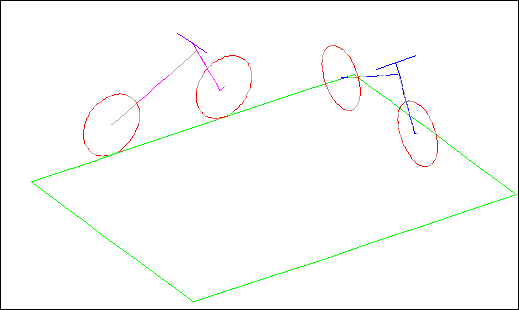
Wobble mode
The weave mode is a side-to-side motion of the entire motorcycle
characterized by a coupling of the yaw and roll oscillations with a significant
lateral displacement of the steering axis.
The weave mode has a natural frequency increasing from about 0.2 Hz at a low
speed to about 3-4 Hz at a high forward speed;
Its value depends on numerous factors:
The mode may be unstable at a low speed; at a high speed it may be difficult to control since its natural frequency may be too high to be controlled by the driver.
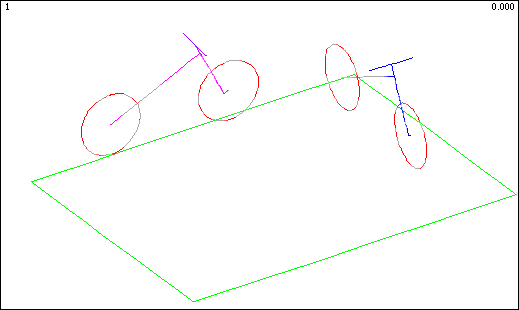
1° weave mode
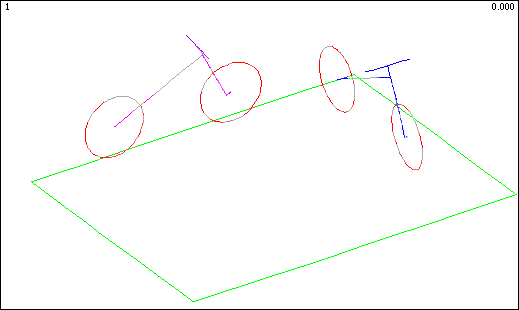
2° weave mode
Now a non-oscillating mode is considered
It is well known that motorcycles, without the action of control exercised by
the rider, are unstable in roll, this motion is a non-oscillatory motion and
consists in the capsize of the two-wheel vehicle.
In fact, the motorcycle in uniform rectilinear motion will eventually fall laterally:
the motorcycle is therefore an intrinsically unstable system, above all in the
low speeds range when the stabilizing action of the gyroscopic effects turns
out to be negligible.
The capsize motion is essential for driving the motorcycle; it is used and controlled
by the rider by means of the steering.
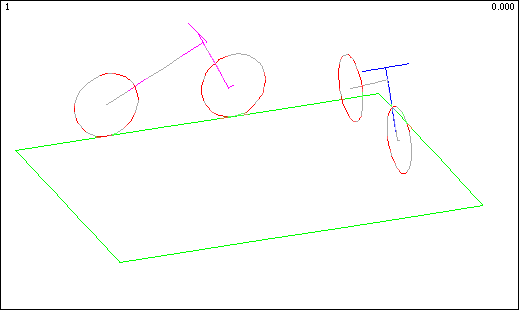
Capsize mode
The time of the vehicle's capsize depends on numerous factors:
The next figure shows an example of wobble and weave vibration of a racing motorcycle:
